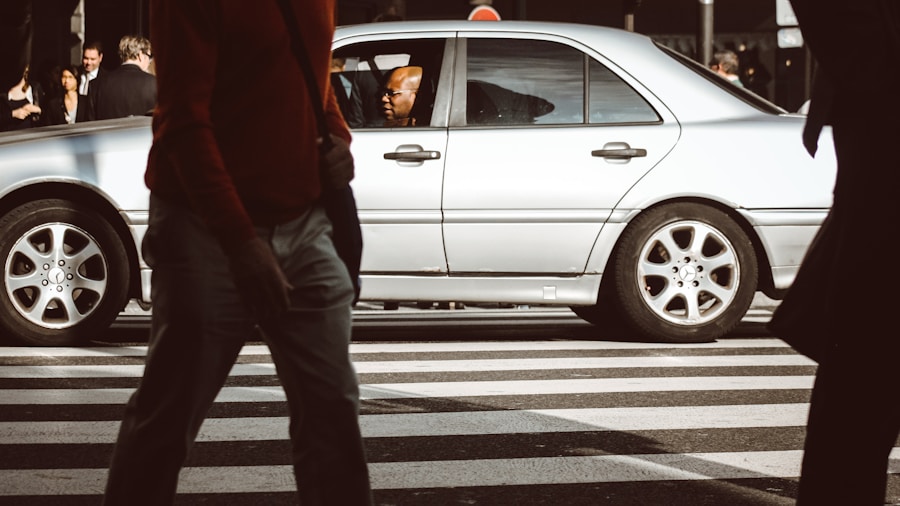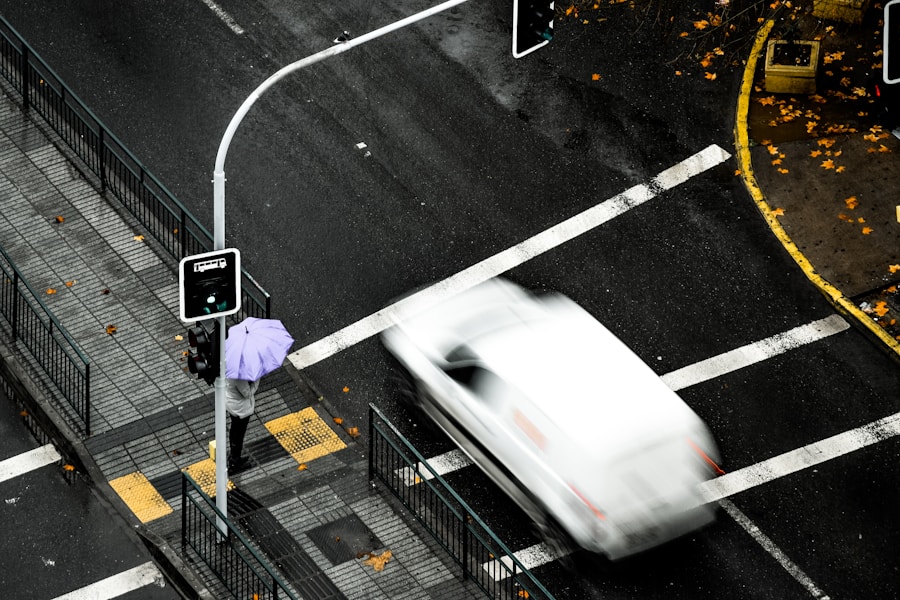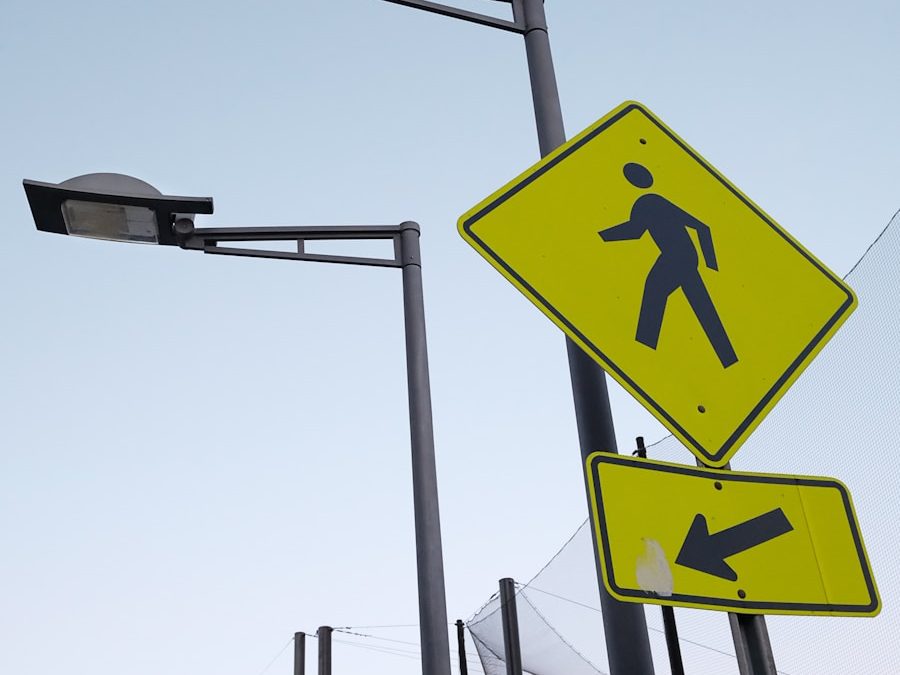Pedestrian accidents represent a significant public safety concern, particularly in urban environments where foot traffic is prevalent. These incidents occur when a vehicle collides with a person who is walking, running, or otherwise moving on foot. The consequences of such accidents can be devastating, often resulting in severe injuries or fatalities for the pedestrian involved.
According to the National Highway Traffic Safety Administration (NHTSA), thousands of pedestrians are killed each year in the United States alone, highlighting the urgent need for awareness and preventive measures. The dynamics of pedestrian accidents are complex, influenced by factors such as driver behavior, road conditions, and urban design. The increasing prevalence of pedestrian accidents can be attributed to various factors, including distracted driving, speeding, and inadequate infrastructure.
As cities expand and populations grow, the interaction between vehicles and pedestrians becomes more frequent and fraught with risk. Moreover, the rise of mobile technology has led to an increase in distracted driving incidents, where drivers may be preoccupied with their phones or other devices rather than paying attention to their surroundings. This article delves into the legal responsibilities of drivers, the consequences of hitting a pedestrian, insurance implications, and the steps that can be taken to prevent such tragic events.
Key Takeaways
- Pedestrian accidents can result in serious injuries or even death, making it crucial for drivers to understand their legal responsibilities and potential consequences.
- Drivers have a legal responsibility to exercise caution and follow traffic laws to prevent pedestrian accidents, and may face legal and financial consequences if they fail to do so.
- Hitting a pedestrian can result in criminal charges, civil lawsuits, and financial compensation for the victim, as well as emotional and psychological consequences for the driver.
- Insurance coverage for pedestrian accidents may vary depending on the driver’s policy and the circumstances of the accident, making it important for drivers to understand their coverage options.
- In the event of a pedestrian accident, the victim may pursue a civil lawsuit to seek financial compensation for medical expenses, lost wages, and pain and suffering.
Legal Responsibilities for Drivers
Safety and Responsibility
Drivers have a legal obligation to operate their vehicles safely and responsibly, particularly in areas where pedestrians are present. This duty of care requires them to remain vigilant and attentive to their surroundings, yielding the right of way to pedestrians at crosswalks and other designated areas.
Consequences of Negligence
Failure to meet these responsibilities can result in legal repercussions, including civil liability for damages incurred by the pedestrian. In many jurisdictions, laws are specifically designed to protect pedestrians. For instance, some states have enacted “pedestrian right-of-way” laws that require drivers to stop for pedestrians crossing at intersections or in marked crosswalks.
Understanding these legal responsibilities is crucial for drivers, as ignorance or negligence can lead to severe consequences not only for the pedestrian but also for the driver involved.
Consequences of Hitting a Pedestrian

The consequences of hitting a pedestrian can be profound and multifaceted. For the pedestrian, injuries can range from minor bruises to life-altering conditions such as traumatic brain injuries, spinal cord damage, or even death. The physical toll is often accompanied by emotional and psychological repercussions, including anxiety, depression, and post-traumatic stress disorder (PTSD).
The impact on families can be equally devastating, as they may face not only the emotional strain of caring for an injured loved one but also financial burdens related to medical expenses and lost wages. For drivers involved in pedestrian accidents, the consequences can also be severe. Beyond the immediate emotional distress of having caused harm to another person, drivers may face legal action that could result in civil liability or criminal charges.
Depending on the circumstances surrounding the accident—such as whether the driver was under the influence of alcohol or drugs—penalties can range from fines to imprisonment. Furthermore, drivers may experience long-term repercussions in terms of increased insurance premiums and potential difficulties in securing future employment due to a criminal record.
Insurance Coverage for Pedestrian Accidents
| Year | Number of Pedestrian Accidents | Percentage of Accidents Covered by Insurance |
|---|---|---|
| 2018 | 5,977 | 72% |
| 2019 | 6,590 | 68% |
| 2020 | 7,201 | 70% |
Insurance coverage plays a critical role in addressing the aftermath of pedestrian accidents. Most drivers carry liability insurance, which is designed to cover damages incurred by others in the event of an accident. This coverage typically includes medical expenses for injured pedestrians as well as compensation for lost wages and pain and suffering.
However, the specifics of coverage can vary significantly based on state laws and individual insurance policies. In some cases, drivers may also have personal injury protection (PIP) or uninsured/underinsured motorist coverage that can provide additional financial support. For pedestrians who are injured in an accident, navigating insurance claims can be complex.
If the driver is found at fault, their liability insurance should cover the pedestrian’s medical expenses and other damages. However, if the driver is uninsured or underinsured, the injured pedestrian may need to rely on their own insurance policy or pursue a claim directly against the driver. This situation underscores the importance of understanding one’s own insurance coverage and seeking legal advice when necessary to ensure that all potential avenues for compensation are explored.
Civil Lawsuits and Financial Compensation
In cases where insurance coverage is insufficient or disputes arise regarding fault, injured pedestrians may choose to pursue civil lawsuits against the driver responsible for the accident. Civil litigation allows victims to seek financial compensation for a range of damages, including medical expenses, rehabilitation costs, lost income, and pain and suffering. The process typically involves filing a complaint in court and presenting evidence to establish liability on the part of the driver.
The success of a civil lawsuit often hinges on demonstrating negligence. This requires proving that the driver failed to exercise reasonable care, leading directly to the accident and subsequent injuries. Evidence such as police reports, witness statements, medical records, and expert testimony can play a crucial role in building a strong case.
Additionally, many personal injury claims are settled out of court through negotiations between attorneys representing both parties. Understanding the intricacies of civil lawsuits is essential for pedestrians seeking justice and compensation following an accident.
Criminal Charges for Hitting a Pedestrian

In certain circumstances, hitting a pedestrian can lead to criminal charges against the driver involved. These charges may range from misdemeanors to felonies depending on factors such as intent, recklessness, or negligence exhibited during the incident.
The legal system takes pedestrian accidents seriously due to their potential for severe consequences. Prosecutors may pursue criminal charges not only as a means of punishing reckless behavior but also as a deterrent against future incidents. Convictions can result in significant penalties including fines, community service, license suspension, and even imprisonment.
The criminal aspect of hitting a pedestrian adds another layer of complexity to an already challenging situation for both victims and drivers.
Steps to Take After Hitting a Pedestrian
When a driver is involved in an accident with a pedestrian, immediate actions are crucial for ensuring safety and compliance with legal obligations. The first step should always be to check on the condition of the pedestrian and call emergency services if necessary. Providing assistance while waiting for medical professionals is essential; however, it is important not to move an injured person unless there is an imminent danger such as fire or further traffic hazards.
After ensuring that medical help is on the way, drivers should exchange information with the pedestrian involved in the accident as well as any witnesses present at the scene. This includes names, contact information, insurance details, and vehicle registration numbers. Documenting the scene through photographs can also be beneficial for later insurance claims or legal proceedings.
It is advisable for drivers not to admit fault at this stage; instead, they should focus on gathering information and cooperating with law enforcement when they arrive.
Preventing Pedestrian Accidents
Preventing pedestrian accidents requires a multifaceted approach involving education, infrastructure improvements, and community engagement. Drivers must be educated about their responsibilities toward pedestrians through public awareness campaigns that emphasize safe driving practices such as avoiding distractions and adhering to speed limits in populated areas. Additionally, initiatives like “Vision Zero,” which aims to eliminate traffic fatalities through comprehensive safety strategies, have gained traction in various cities around the world.
Infrastructure plays a critical role in enhancing pedestrian safety as well. Well-designed crosswalks with clear signage and adequate lighting can significantly reduce accidents by making it easier for drivers to see pedestrians and vice versa. Implementing traffic calming measures such as speed bumps or extended sidewalks can also encourage safer interactions between vehicles and pedestrians.
Ultimately, fostering a culture of respect for pedestrian rights within communities is essential for reducing accidents and ensuring safer streets for everyone involved.
If you are interested in learning more about insurance options for protecting your home, you may want to check out this article on home insurance. Understanding the legal and financial implications of various insurance policies can help you make informed decisions to protect yourself and your assets in case of unexpected events.
FAQs
What are the legal ramifications of hitting a pedestrian?
Hitting a pedestrian can result in legal consequences such as being charged with a traffic violation, negligence, or even a criminal offense depending on the circumstances of the accident.
What are the insurance ramifications of hitting a pedestrian?
If you hit a pedestrian, your car insurance may cover the medical expenses and other damages incurred by the pedestrian. However, your insurance rates may increase as a result of the accident.
What should you do if you hit a pedestrian?
If you hit a pedestrian, you should stop immediately, call for emergency medical assistance, and provide your contact and insurance information to the pedestrian. It is also important to report the accident to the police.
What factors can affect the legal and insurance ramifications of hitting a pedestrian?
Factors such as the circumstances of the accident, the pedestrian’s actions, and whether the driver was at fault can all affect the legal and insurance ramifications of hitting a pedestrian.


